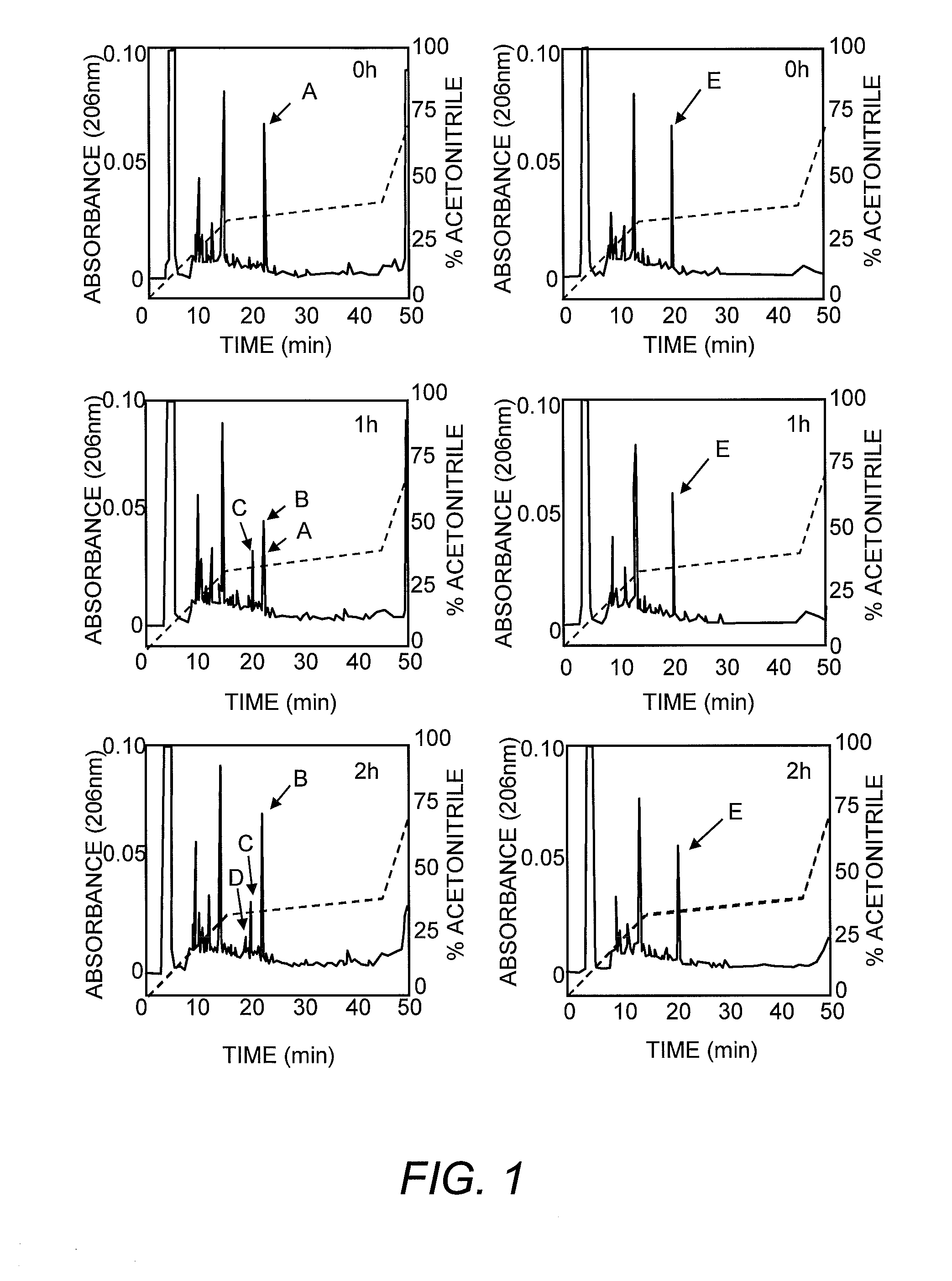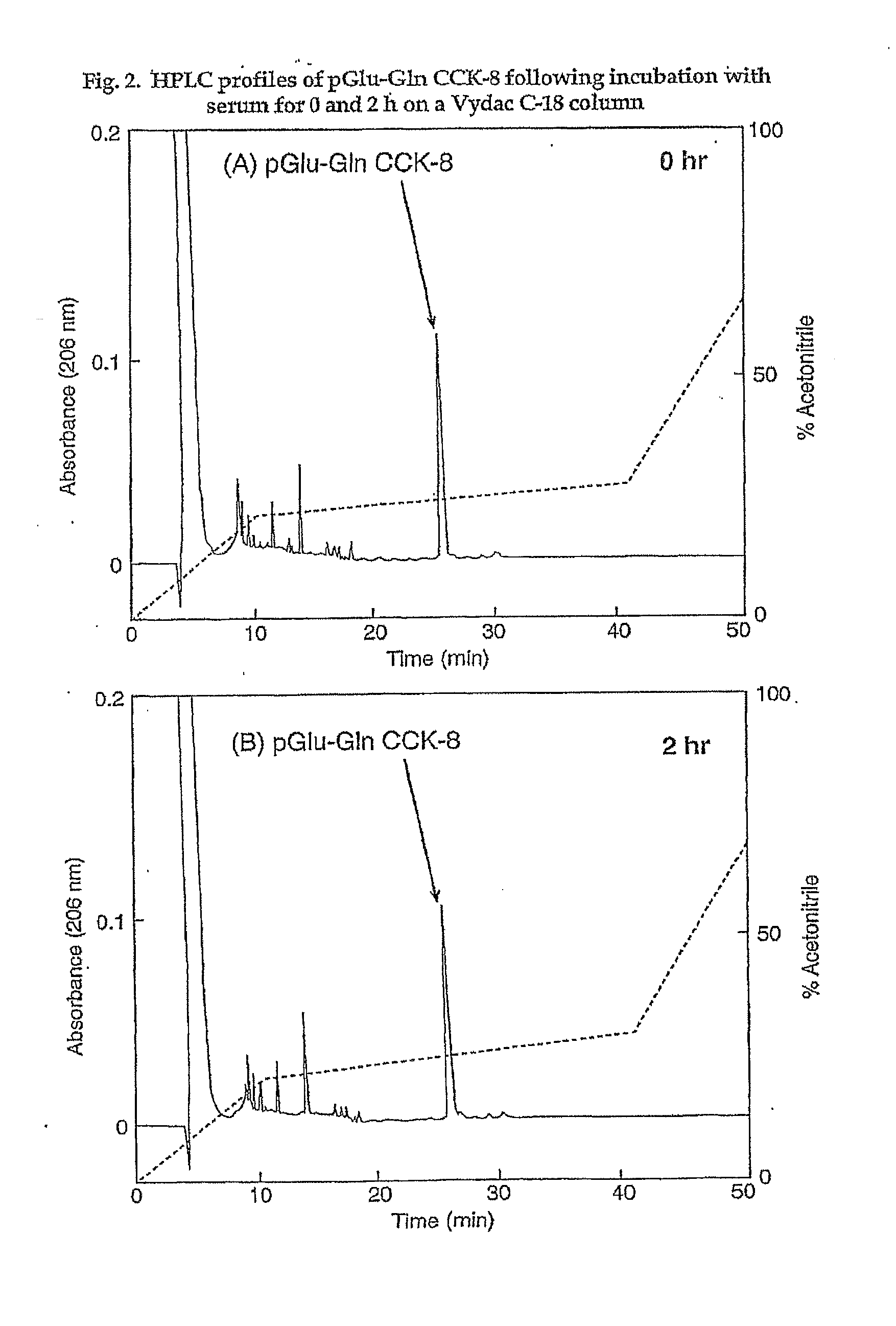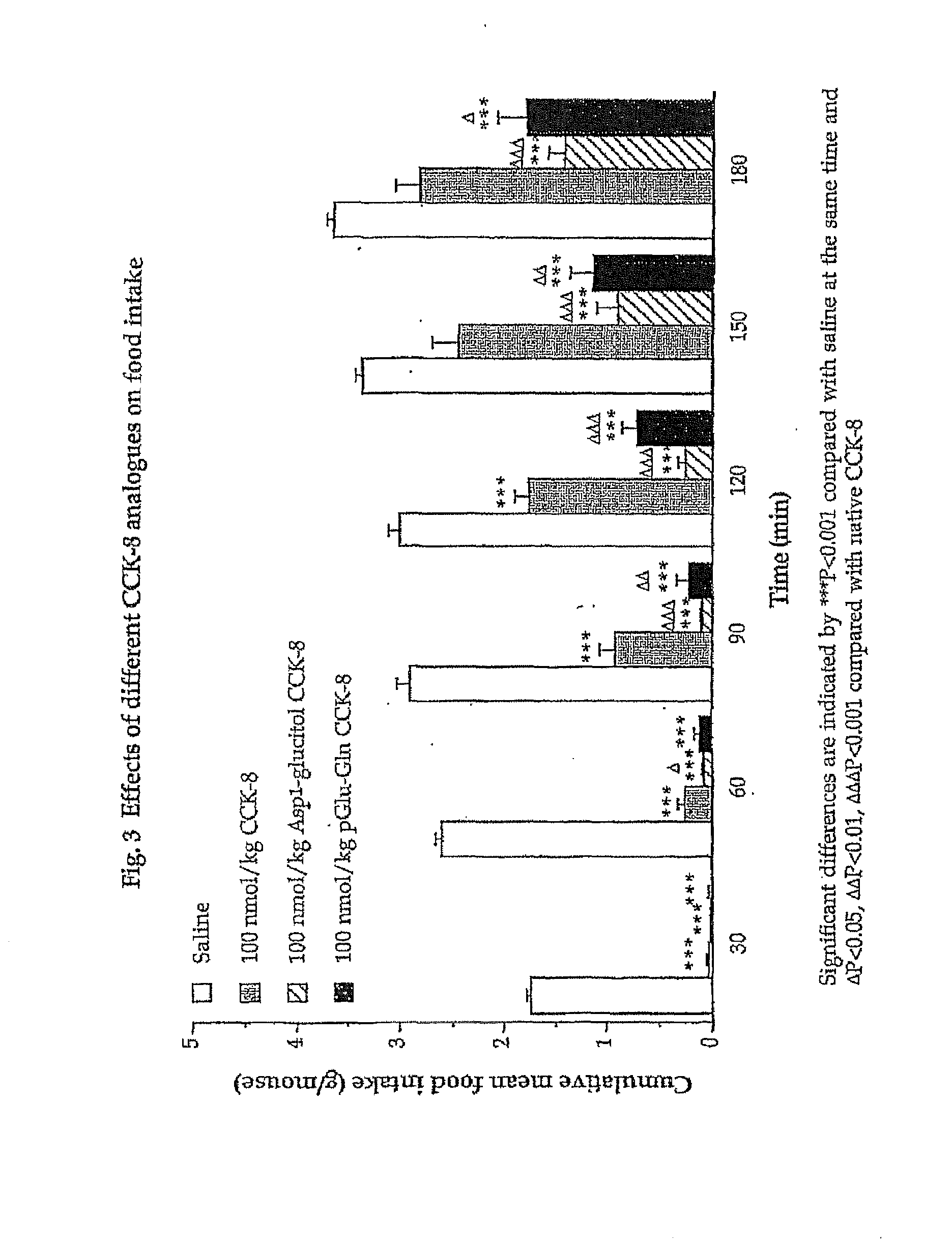Modified CCK peptides
a peptide and cck technology, applied in the field of cck peptides, can solve the problems of limited drug availability to counter these major metabolic diseases, ineffectiveness, and health risks of obesity, and achieve the effects of reducing food intake in vivo, substantial resistance to aminopeptidase degradation, and increasing biological activity
- Summary
- Abstract
- Description
- Claims
- Application Information
AI Technical Summary
Benefits of technology
Problems solved by technology
Method used
Image
Examples
example 2
Effects of CCK-8 Analogues on Food Intake
[0178]The following example investigates preparation of Asp1-glucitol CCK-8 and pGlu-Gln CCK-8 together with evaluation of their effectiveness at inducing satiety and decreasing food intake in vivo. The results clearly demonstrate that these novel analogues exhibit substantial resistance to aminopeptidase degradation and increased biological activity compared with native CCK-8.
Research Design and Methods
Materials.
[0179]Cholecystokinin octapeptide (sulphated CCK-8), pGlu-Gln CCK-8 and other analogues will be synthesised using an Applied Biosystems 432 Peptide synthesizer (as described above). HPLC grade acetonitrile was obtained from Rathburn (Walkersburn, Scotland). Sequencing grade trifluoroacetic acid (TFA) was obtained from Aldrich (Poole, U.K.). All water used in these experiments was purified using a Milli-Q, Water Purification System (Millipore Corporation, Millford, Mass., U.S.A.). All other chemicals purchased were from Sigma, Poole, ...
PUM
| Property | Measurement | Unit |
|---|---|---|
| Composition | aaaaa | aaaaa |
| Structure | aaaaa | aaaaa |
| Stability | aaaaa | aaaaa |
Abstract
Description
Claims
Application Information
 Login to View More
Login to View More - R&D
- Intellectual Property
- Life Sciences
- Materials
- Tech Scout
- Unparalleled Data Quality
- Higher Quality Content
- 60% Fewer Hallucinations
Browse by: Latest US Patents, China's latest patents, Technical Efficacy Thesaurus, Application Domain, Technology Topic, Popular Technical Reports.
© 2025 PatSnap. All rights reserved.Legal|Privacy policy|Modern Slavery Act Transparency Statement|Sitemap|About US| Contact US: help@patsnap.com



